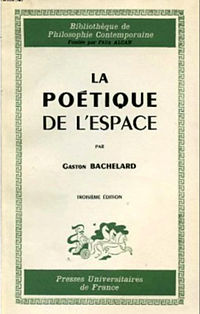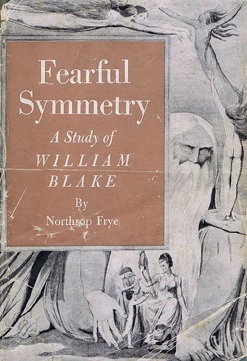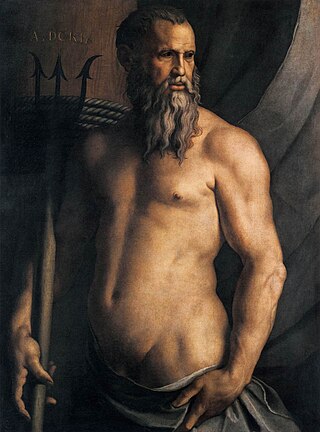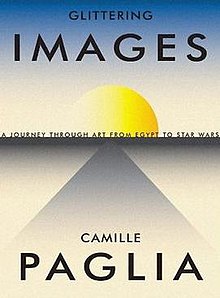
Joseph John Campbell was an American writer. He was a professor of literature at Sarah Lawrence College who worked in comparative mythology and comparative religion. His work covers many aspects of the human experience. Campbell's best-known work is his book The Hero with a Thousand Faces (1949), in which he discusses his theory of the journey of the archetypal hero shared by world mythologies, termed the monomyth.

Sexual Personae: Art and Decadence from Nefertiti to Emily Dickinson is a 1990 work about sexual decadence in Western literature and the visual arts by scholar Camille Paglia, in which she addresses major artists and writers such as Donatello, Sandro Botticelli, Leonardo da Vinci, Edmund Spenser, William Shakespeare, Johann Wolfgang von Goethe, Samuel Taylor Coleridge, Lord Byron, Emily Brontë, and Oscar Wilde. Following Friedrich Nietzsche, Paglia argues that the primary conflict in Western culture is between the binary forces of the Apollonian and Dionysian, Apollo being associated with order, symmetry, culture, rationality, and sky, and Dionysus with disorder, chaos, nature, emotion, and earth. The book became a bestseller, received critical reviews from numerous feminist scholars, and was praised by numerous literary critics.

Susan Lee Sontag was an American writer, critic, and public intellectual. She mostly wrote essays, but also published novels; she published her first major work, the essay "Notes on 'Camp' ", in 1964. Her best-known works include the critical works Against Interpretation (1966), On Photography (1977), Illness as Metaphor (1978) and Regarding the Pain of Others, as well as the fictional works The Way We Live Now (1986), The Volcano Lover (1992), and In America (1999).
Bram Dijkstra is an American author, literary critic and former professor of English literature. Dijkstra wrote seven books on various literary and artistic subjects concerning writing. He also curates art exhibitions and writes catalog essays for San Diego art museums.

Carol J. Adams is an American writer, feminist, and animal rights advocate. She is the author of several books, including The Sexual Politics of Meat: A Feminist-Vegetarian Critical Theory (1990) and The Pornography of Meat (2004), focusing in particular on what she argues are the links between the oppression of women and that of non-human animals. She was inducted into the Animal Rights Hall of Fame in 2011.

The Second Sex is a 1949 book by the French existentialist philosopher Simone de Beauvoir, in which the author discusses the treatment of women in the present society as well as throughout all of history. Beauvoir researched and wrote the book in about 14 months between 1946 and 1949. She published the work in two volumes: Facts and Myths, and Lived Experience. Some chapters first appeared in the journal Les Temps modernes.

The Poetics of Space is a 1958 book about architecture by the French philosopher Gaston Bachelard. The book is considered an important work about art. Commentators have compared Bachelard's views to those of the philosopher Martin Heidegger.

The Beauty Myth: How Images of Beauty Are Used Against Women is a nonfiction book by Naomi Wolf, originally published in 1990 by Chatto & Windus in the UK and William Morrow & Co (1991) in the United States. It was republished in 2002 by HarperPerennial with a new introduction.

The Apollonian and the Dionysian are philosophical and literary concepts represented by a duality between the figures of Apollo and Dionysus from Greek mythology. Its popularization is widely attributed to the work The Birth of Tragedy by Friedrich Nietzsche, though the terms had already been in use prior to this, such as in the writings of poet Friedrich Hölderlin, historian Johann Joachim Winckelmann, and others. The word Dionysian occurs as early as 1608 in Edward Topsell's zoological treatise The History of Serpents. The concept has since been widely invoked and discussed within Western philosophy and literature.

The ancient Cycladic culture flourished in the islands of the Aegean Sea from c. 3300 to 1100 BCE. Along with the Minoan civilization and Mycenaean Greece, the Cycladic people are counted among the three major Aegean cultures. Cycladic art therefore comprises one of the three main branches of Aegean art.

Sexual Politics is the debut book by American writer and activist Kate Millett, based on her PhD dissertation at Columbia University. It was published in 1970 by Doubleday. It is regarded as a classic of feminism and one of radical feminism's key texts, a formative piece in shaping the intentions of the second-wave feminist movement. In Sexual Politics, an explicit focus is placed on male dominance throughout prominent 20th century art and literature. According to Millett, western literature reflects patriarchal constructions and the heteronormativity of society. She argues that men have established power over women, but that this power is the result of social constructs rather than innate or biological qualities.

The Marilyn Diptych (1962) is a silkscreen painting by American pop artist Andy Warhol depicting Marilyn Monroe. The monumental work is one of the artist's most noted of the movie star.

Fearful Symmetry: A Study of William Blake is a 1947 book by Canadian literary critic Northrop Frye whose subject is the work of English poet and visual artist William Blake. The book has been hailed as one of the most important contributions to the study of William Blake and one of the first that embarked on the interpretation of many of Blake's most obscure works. As Frye himself acknowledges, Blake's work is not to be deciphered but interpreted and seen within its specific historical and social contexts.

Camille Anna Paglia is an American academic and social critic and feminist. Paglia has been a professor at the University of the Arts in Philadelphia, Pennsylvania, since 1984. She is critical of many aspects of modern culture and is the author of Sexual Personae: Art and Decadence from Nefertiti to Emily Dickinson (1990) and other books. She is also a critic of contemporary American feminism and of post-structuralism, as well as a commentator on multiple aspects of American culture such as its visual art, music, and film history.

Against Our Will: Men, Women and Rape is a 1975 book about rape by Susan Brownmiller, in which the author argues that rape is "a conscious process of intimidation by which all men keep all women in a state of fear."

Who Stole Feminism? How Women Have Betrayed Women is a 1994 book about American feminism by Christina Hoff Sommers, a writer who was at that time a philosophy professor at Clark University. Sommers argues that there is a split between equity feminism and what she terms "gender feminism". Sommers contends that equity feminists seek equal legal rights for women and men, while gender feminists seek to counteract historical inequalities based on gender. Sommers argues that gender feminists have made false claims about issues such as anorexia and domestic battery and exerted a harmful influence on American college campuses. Who Stole Feminism? received wide attention for its attack on American feminism, and it was given highly polarized reviews divided between conservative and liberal commentators. Some reviewers praised the book, while others found it flawed.

The Origins and History of Consciousness is a 1949 book by the psychologist and philosopher Erich Neumann, in which the author attempts to "outline the archetypal stages in the development of consciousness". It was first published in English in 1954 in a translation by R. F. C. Hull. The work has been seen as an important and enduring contribution to Jungian thought.

Rembrandt Harmenszoon van Rijn's The Abduction of Europa (1632) is one of his rare mythological subject paintings. The work is oil on a single oak panel and now located in the J. Paul Getty Museum. The inspiration for the painting is Ovid's Metamorphoses, part of which tells the tale of Zeus's seduction and capture of Europa. The painting shows a coastal scene with Europa being carried away in rough waters by a bull while her friends remain on shore with expressions of horror. Rembrandt combined his knowledge of classical literature with the interests of the patron in order to create this allegorical work. The use of an ancient myth to impart a contemporary thought and his portrayal of the scene using the High Baroque style are two strong aspects of the work.

The Portrait of Andrea Doria as Neptune is an oil painting on canvas completed by Bronzino for a private collection in either the 1530s or 1540s. It is now in the Pinacoteca di Brera in Milan, Italy. An oil painting on canvas, it measures 199.5 centimetres (78.5 in) by 149 centimetres (59 in). In a conscious revival of the convention in classical sculpture of showing important political figures in heroic nudity, it depicts the Genoan admiral, Andrea Doria, posing as the classical god of the sea, Neptune.

Free Women, Free Men: Sex, Gender, Feminism is a 2017 essay collection by American academic and cultural critic Camille Paglia. Comprising previously published essays, the book's central principles, according to Paglia, are "free thought and free speech—open, mobile, and unconstrained by either liberal or conservative ideology"; she argues for an "enlightened feminism, animated by a courageous code of personal responsibility".





















